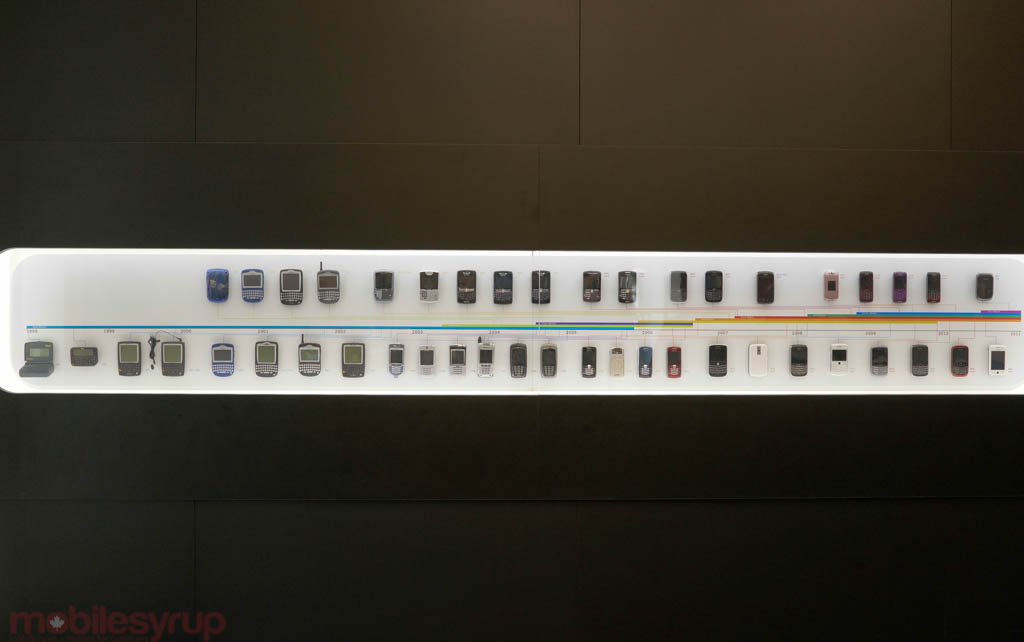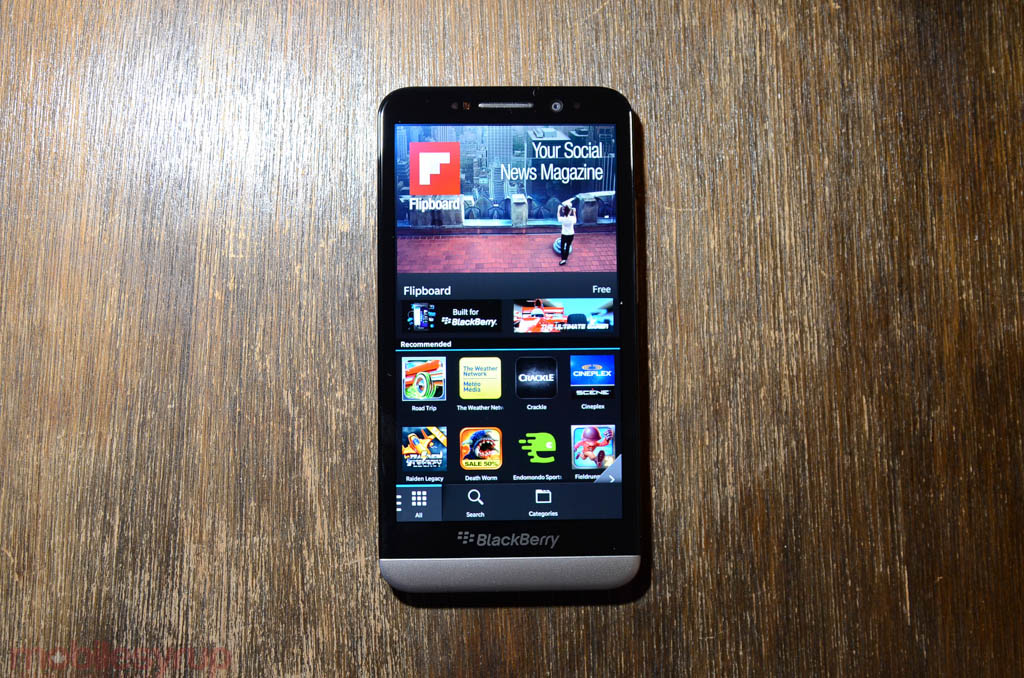
The winding roads of Highway 401 between Toronto and Kitchener leave ample time for reflection. As I thought about the changing season and the glorious colours produced from its dying foliage, it seemed an apt metaphor to consider the city of Waterloo as being in a similar position. The BlackBerry we know is dying; in six months, its executive structure, its real estate and its product line will likely look drastically different. A renewed focus on the enterprise under the watch of one of a several possible salvage companies may mean the end of the company’s storied consumer line. The BlackBerry Z30 may be the company’s last phone.
Seen from this perspective, it would be easy to think BlackBerry employees are paralyzed by fear of job loss and potential upheaval, both within the company and in Waterloo at large. Instead, the city is battening the hatches and stands to benefit from thousands of talented engineers looking to begin new companies and join ones expanding into the region. Others will stay on and improve the many core offerings that the company does so well.
Enter BlackBerry Z30. Waterloo was quiet and the BlackBerry campus was calm as I wended my way to the Experience Centre, where the company shows off its current and legacy products to the public. It was interesting contrasting the smaller, stouter BlackBerry OS product line to the ones available now.
For all of their software limitations, the Z10, Q10 and Z30 are wonderful examples of constructive and utilitarian industrial design; they have a generous distribution of weight and a comfortable, pleasing form factor, and the Z30 is especially potent in this regard.
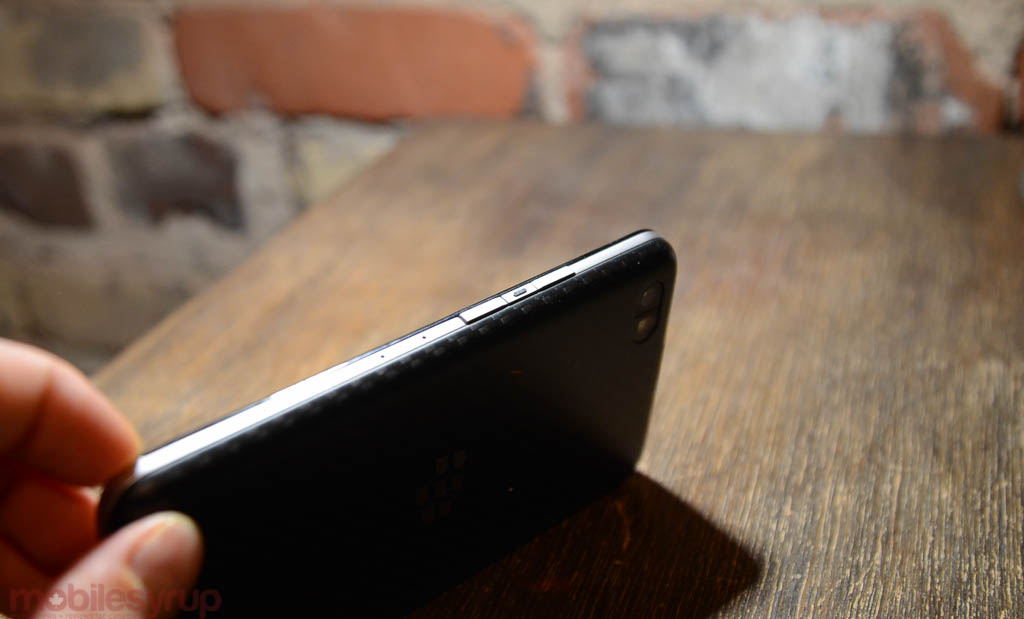
It’s a big phone, let’s not kid ourselves. The 5-inch slate is larger than the Samsung Galaxy S4 and HTC One, and it feels a little unwieldy in a single paw. But it’s made well, with a glass-weaved carbon fibre backing and a Gorilla Glass-covered Super AMOLED display. While the screen’s resolution stays the same as the Z10’s — 1280×720 pixels — it uses a new panel that uses the same diamond-shaped subpixels as the Galaxy Note 2. It’s also got fantastic colour reproduction and viewing angles.
The internals have received an upgrade over the Z10: though it retains a dual-core Qualcomm chip, the clock speed has been boosted to 1.7Ghz, and the new MSM8960T chip boasts a quad-core Adreno 320 GPU. This is the same configuration as the Moto X, but the Z30 is a completely different beast. Aimed at what Jeff Gadway, BlackBerry’s Senior Manager of Product Marketing, calls the “prosumer market,” the Z30 appeals to the customer who wants a big screen for multimedia and the same great BlackBerry 10 features for productivity that defined the Z10.
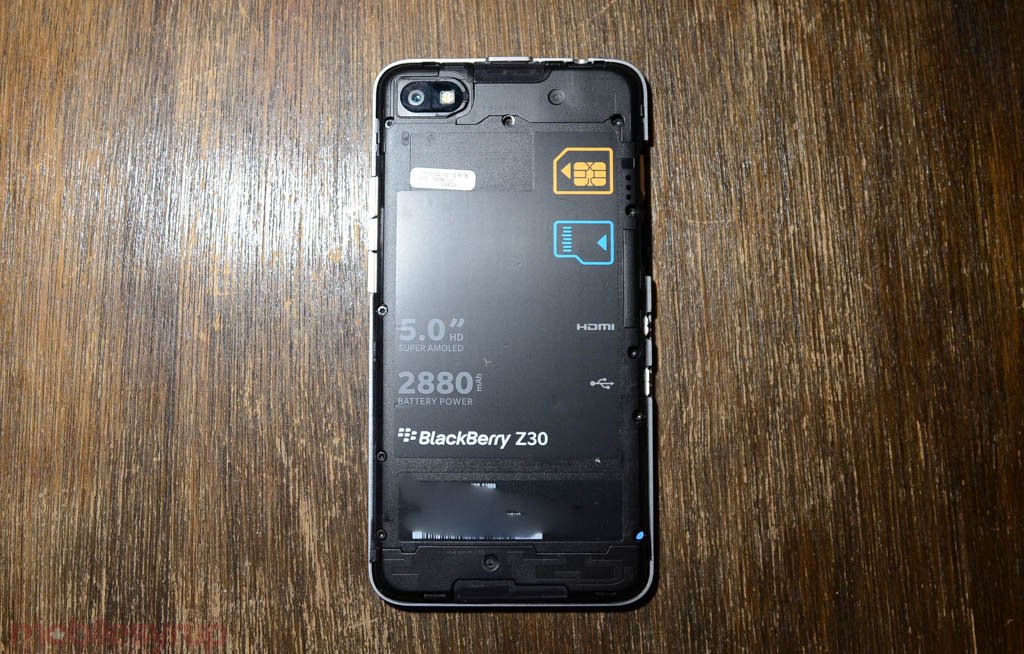
“We saw a lot of 5-inch Android devices which were focused on media consumption,” he said during a media briefing, “and we identified a need for a larger device for those who want to be a bit more productivity focused.” The Z30 fits that role quite nicely, though it’s not as much of an upgrade over the Z10 as some consumers would want.
Where it excels, other than the slight boost in GPU speed, is the new antenna design, which promises faster LTE speeds and fewer dropped calls in low-signal areas; and in audio, as the device has stereo speakers and multiple microphones for better noise cancellation. Through BlackBerry’s acquisition of Paratek Microwave, the Z30’s antenna uses a system called ParaTune, which allows the baseband to keep a connection to a cell tower for longer without increasing power output. This ensures that LTE speeds are maintained in low coverage areas and the 2880mAh is not unduly strained in those situations.
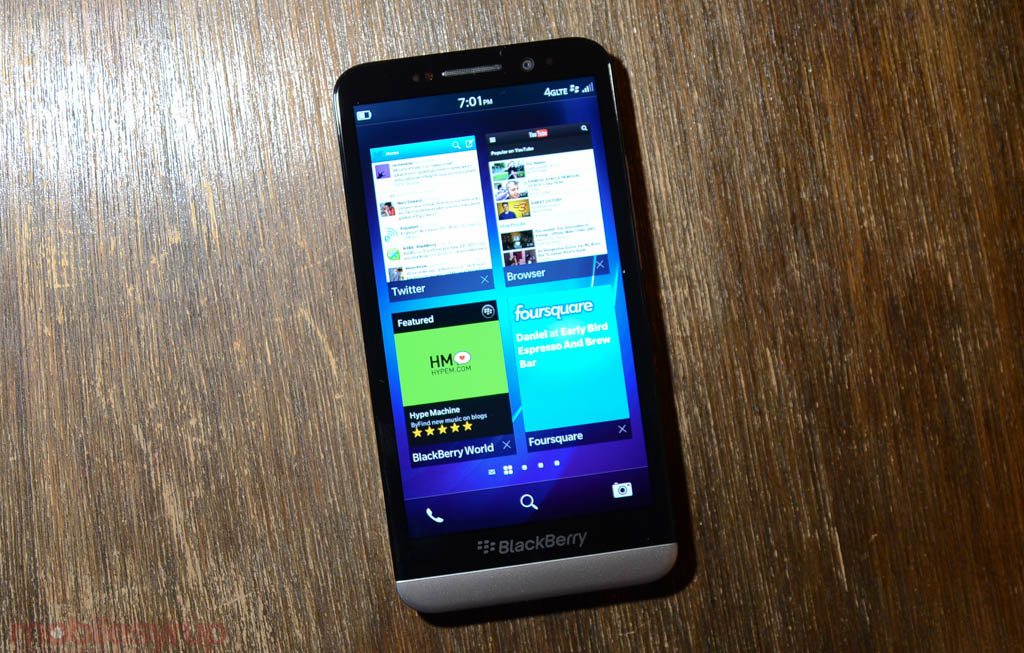
After using the phone briefly, it’s clear that this is the best BlackBerry 10 experience you can get. Apps like the newly-released Flipboard or Badland play well and look great on the screen, which is closer to the surface and less reflective than previous BlackBerry 10 devices. Touch response is excellent, and we definitely noticed better performance throughout the UI, though I can’t tell whether it’s due to hardware or software improvements.
Much of improvement comes from BlackBerry 10.2, which comes preloaded on the phone and will roll out to the Z10, Q10 and Q5 in the weeks following the Z30 launch. While there are few substantial improvements, iterative changes to the core feature set make for a better communication device. For instance, the Hub now has a Priority area which categorizes important contacts or conversations into a single area. The OS learns from input based on who users contact or BBM the most, and individual conversations or contacts can be set as Priority manually.
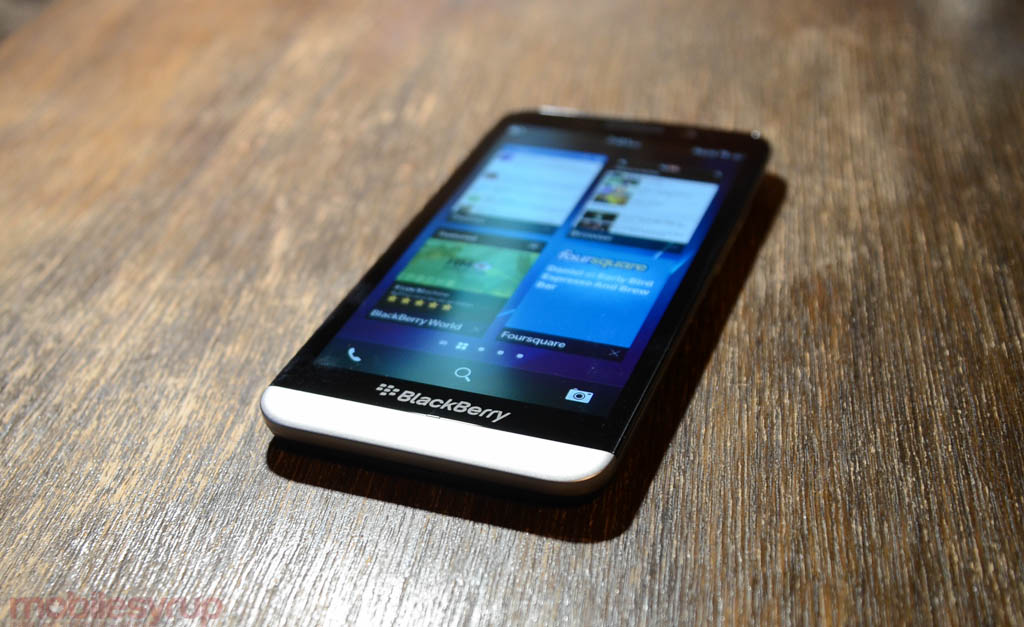
BlackBerry 10.2 also offers better copy and paste support, along with lock screen notifications and message previews from within any app — all iterative upgrades from what was offered in BlackBerry 10.1. There is a lot to like here, and it’s mainly the app selection that is lacking compared to other mobile operating systems.
The addition of a new Android runtime, now based on Jelly Bean, along with an improved SDK and initial support for headless apps, reinforces BlackBerry 10 as a great development platform. There are some good apps here — Hype Machine released their native app before it’s even been announced for Android — but the greats are few and far between, and developers don’t seem keen on keeping them updated once they’re released. It’s the same issue that Windows Phone users face, but BlackBerry’s advantage is that it supports a lot of web standards, so high performant HTML5 and Javascript-based apps can be turned into something that resembles a native experience. Those, and the occasional Android port, help flesh out what is otherwise a pretty sparse ecosystem.
Games and media admittedly sound fantastic, as do conference calls, and the keyboard has been tweaked slightly for the bigger display.
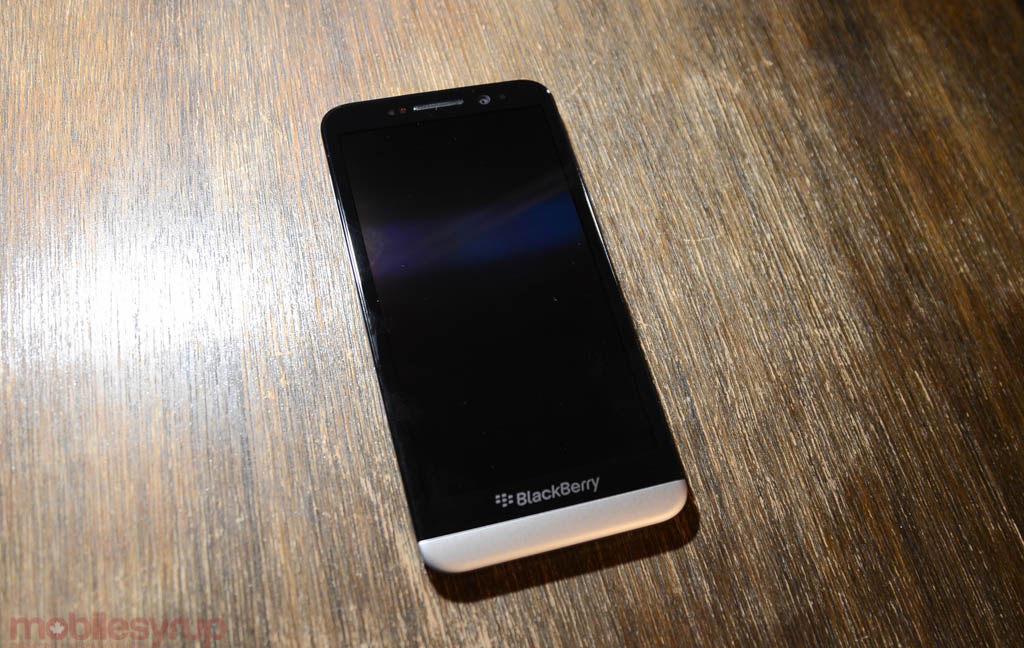
Ultimately, when the Z30 is released in the coming weeks, it’s not going to divert attention away from what is happening in the executive offices of the Company Former Known as RIM. BlackBerry is hard-up, and the employees, despite putting on brave faces all, know this. They could be out of a job in the coming months, and are desperate to bring value to a brand that was once worth its weight in red flashing LEDs. The irony surrounding the Z30 launch is that it is by far the best BlackBerry device ever made, but it will likely have the lightest impact of any of the company’s flagships.
From crystal-clear voice calls over cellular networks and BBM, to the vivid 5-inch screen, sharp 8MP camera, huge 2880mAh battery and excellent ergonomics, I look forward to using the Z30 over the coming weeks. When BBM is released for Android and iOS, I can even see myself using it as my main device. But I’m worried that this will be the last great consumer product the company releases, and that’s not doing the Z30 any favours.
MobileSyrup may earn a commission from purchases made via our links, which helps fund the journalism we provide free on our website. These links do not influence our editorial content. Support us here.

